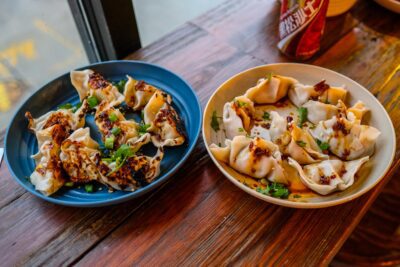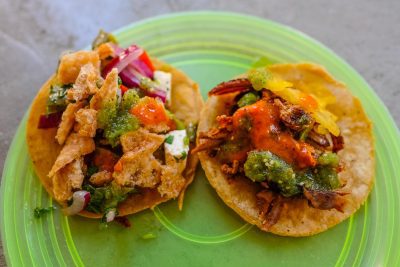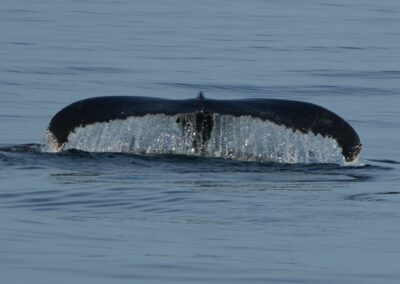Shima aji from Kagoshima, Japan (Courtesy Shota Omakase)
At Shota Omakase in Williamsburg, ‘nude sushi’ takes center stage
This 18-plate meal of quality fish, a special rice and paired sauces might be the best sushi experience in the city
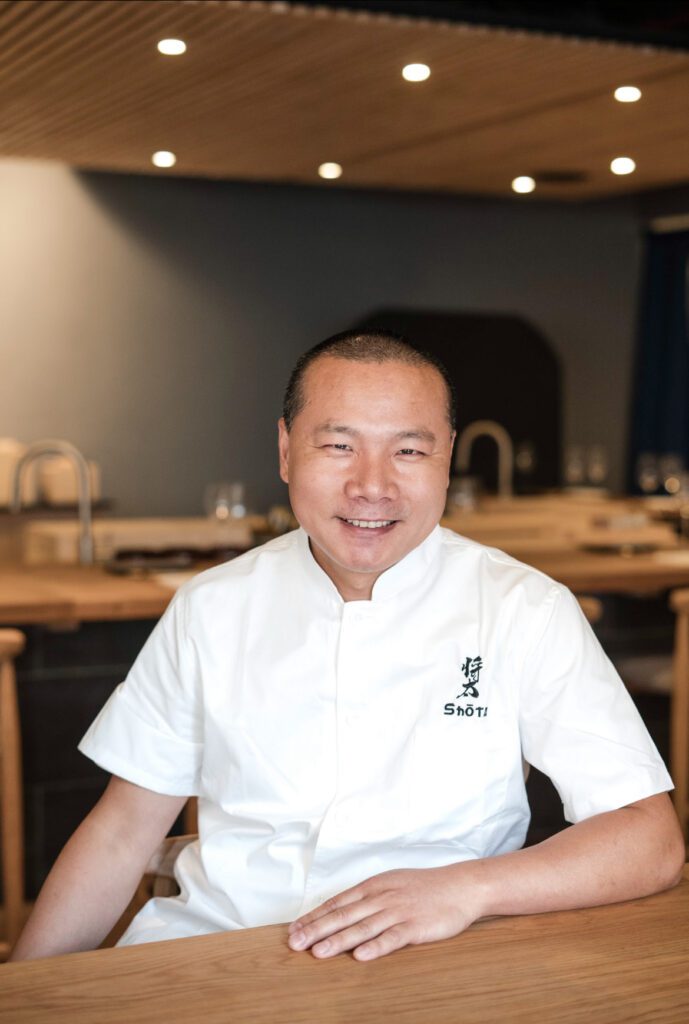
Cheng Lin (Courtesy Shota Omakase)
Cheng Lin never planned on becoming a master sushi chef. Or owning his own restaurant. In fact, when he arrived in New York from Fujian, China, in 1997, he had never set foot in a professional kitchen.
But, in need of a job, he ended up at Hatsuhana as a sushi chef trainee. Two years later, he randomly discovered the manga “Shota No Sushi,” whose eponymous main character dedicated himself to perfecting the cuisine. Seeing himself in the character, Lin decided to take sushi more seriously. He also decided that if he ever opened his own restaurant, he would name it Shota.
Now 24 years later, that dream is a reality. On Wednesday, Shota Omakase, located at 50 South Third Street in Williamsburg, will celebrate its two-month anniversary. In that time, the establishment has quickly emerged as a contender for the best omakase experience in Brooklyn. At $175 for 18 plates, it is undoubtedly one of the best tasting courses at its price point in the entire five boroughs.
Unlike most other sushi restaurants in the city serving omakase — a chef’s choice dining experience that literally translates to “I’ll leave it up to you” — Shota practices Edomae-style sushi, which is focused on the aging, curing and marinating of fish.
In addition to showcasing this underutilized sushi style, Lin — whose resume also includes stints at Sushi Seki, Blue Ribbon Sushi and Ito Tribeca — is above all else on a mission to provide his customers with the best sushi experience possible. To do so, he lets the ingredients speak for themselves.
“I call it nude sushi because there’s nothing to cover up, it’s just naked,” Lin says, adding with a laugh, “This is not an Instagram place, sorry.”
‘Feel the fish’
Lin is a fanatic about sourcing only the most premium of ingredients.
It all starts in Japan where Shota’s private vendor — the same vendor that supplies multiple Michelin Star restaurants in Manhattan with their fish — hand selects fish caught earlier that morning. It typically takes only three days for a fish to go from the ocean to Shota’s sushi counter.
Lin gets four to five shipments of fish per week. He only uses what’s in season, meaning the menu is constantly changing. He cares about the quality of fish so much that he doesn’t even know the cost of the fish his vendor purchases. Once the fish arrives, he finally sees the bill.
“In Japan, most chefs when they go to the fish market, they never ask the price because they all understand how important quality is,” Lin says. “You want premium quality? You don’t ask [for] prices.”
It’s common for chefs at omakase and other high-end sushi restaurants to treat each plate like a canvas, garnishing slices of fish with colorful flowers or Pollock-esque drips of oil. The plates themselves are also often works of art, adding to the luxurious feel of a high dining experience. Most of Lin’s nude sushi doesn’t even arrive on plates. Instead, the chef hands each piece directly to the diner.
“I want people to feel the fish, feel the rice,” Lin says. “It’s a totally different experience.”
Even the space is nude by design. The dimly lit sushi bar is neutral but sophisticated. White oak countertops and stone-gray walls offer a natural, meditative quality. No artwork adorns the walls so there are no distractions from the food. The only decorations to be found, if you can call them that, are bags of rice, racks of chef’s knives and a pyramid of Japanese square measuring cups. Even the bar, which boasts an impressive selection of wine, champagne and sake, is out of sight from the main dining area.
Lin says nude sushi is a simple but difficult concept to accomplish. Having top-shelf ingredients is certainly part of it, but Lin and his team spend six to seven hours a day getting those ingredients ready to serve.
“It looks simple. So every time we’re putting down a [piece of] sushi, there’s 3 to 5 percent [of the work] you can see,” Lin says. “It’s 95 percent behind the scenes.”
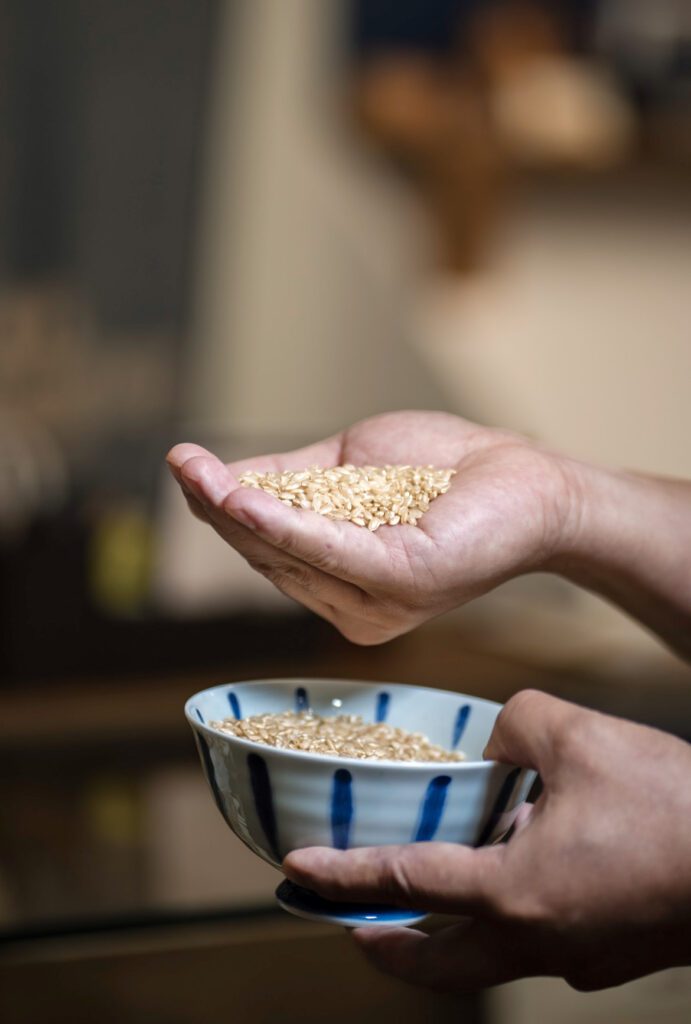

The special rice (Courtesy Shota Omakase)
Fish isn’t the only thing Lin is meticulous about. The restaurant’s rice, vinegar and soy sauces — different sauces are used for different parts of the dinner — all come from small farms or factories that normal consumers or restaurants don’t have access to.
The rice, for example, is 1.5 percent bigger than traditional sushi rice giving each bite more texture — and allowing it to absorb more vinegar. Lin and his team also polish all their rice in house on a weekly basis. During dinner, the rice is switched every three pieces of sushi to control the warmth and vinegar balance.
A casual eater might not think it’s a big deal, but one bite and Lin says customers notice the difference.
“Most of our customers come here and first try our sushi, and they all notice right away: ‘Your sushi is different,’” he says. “You’re right. It is different.”
The meal
During a 6 p.m. tasting on a recent Thursday evening, we shared Shota’s sushi counter with five other people. Though only a fraction of the restaurant’s 28 seats were filled — weekend dinners currently sell out more easily than weeknights — the diners reflected Shota’s investment in putting the customer first.
To the left, a repeat customer who brought two friends to try his “favorite sushi in the city.” On the right, a couple that live above the restaurant and came on the recommendation of neighbors in a building-wide group chat.
The first five of our 18 plates started with dishes that were exceptions to Lin’s “nude” sushi ideal: First, slices of wild Japanese butter fish dressed with vinegar, soy sauce and yuzu kosho — a chile paste fermented with yuzu juice and salt — along with fresh wasabi and hanaho flower petals, alongside a dollop of monkfish liver cooked with sake. As its name implies, the fish was buttery smooth and melted on the tongue — though, the acidity and spice of the kosho was most memorable. The monkfish liver was akin to foie gras but richer.
Next came two plump pieces of smoked and soy-marinated New Zealand king salmon — one of only two of the night’s fish not from Japan — topped with kombu salt and wasabi. The subtlety of the salt helped bring out the fish’s flavor without being distracting.
A piece of Spanish mackerel seared with Japanese charcoal served with a side of citrus miso sauce and pickled cucumbers followed. As the chefs seared each piece, a pleasant smoke filled the room, making it momentarily feel like we were transported inside an exotic barbeque smoker. The pickled cucumbers were a refreshing palate cleanser, and while the citrus sauce was delicious, the smokiness of the fish was best enjoyed on its own.
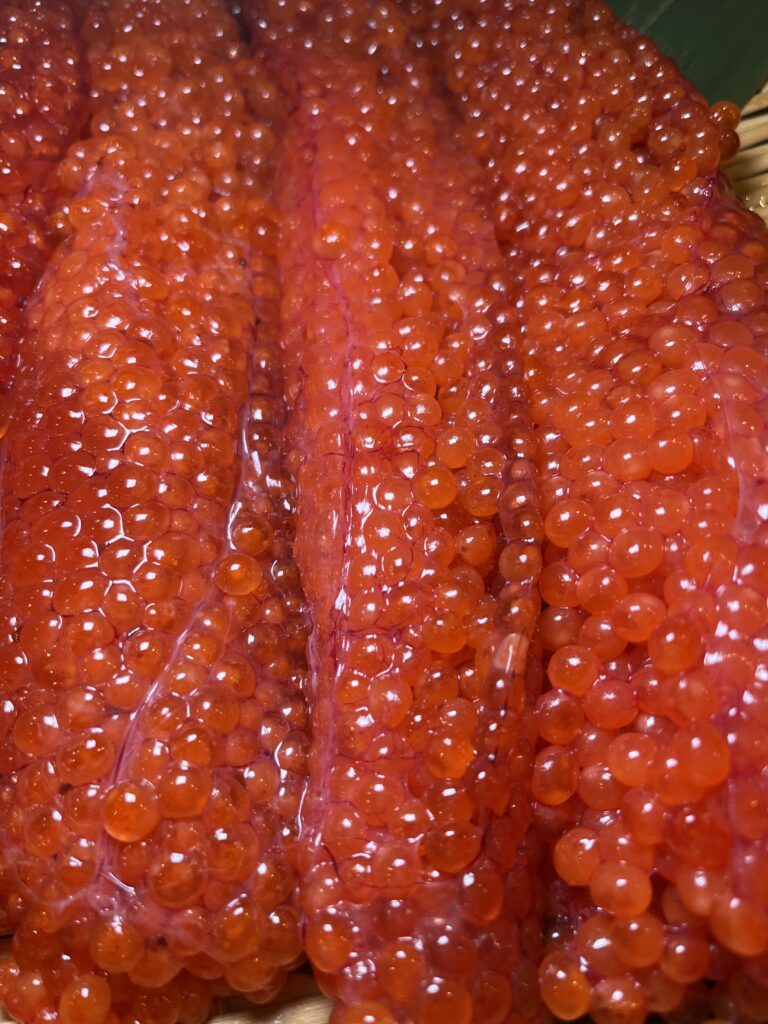

Rows of roe (Courtesy Shota Omakase)
Next came a perfect pile of salmon roe marinated in dashi overnight topped with a generous portion of ossetra caviar and wasabi. Each piece of roe burst with a sweet brine while the caviar had a richer buttery flavor. When eaten together, a symphony of salt danced across the tongue, like a wave crashing onto the beach.
For the soup section, slices of sea bream, fresh wakame seaweed and chrysanthemum flowers bathed in a delectable clear broth. Composed of Japanese kombu (kelp), katsuo boshi (dried simmered, smoked and fermented skipjack tuna), dried flying fish, dried anchovy and dried shiitake, the soup boasted a hearty, natural flavor with lots of umami.
Chef Lin could have capped the dinner off here as a five-course meal and still probably have gotten away with justifying his price point — in fact, he originally thought to charge $275 but settled on a lower price to attract more customers.
But it was time for nude sushi. Eleven pieces of nude sushi to be exact.
From sea bream to scallops to horse mackerel, charcoal-seared black throat sea perch and pike mackerel, it was one tasty bite after another. Lin was right, the rice made a world of a difference. The mouthfeel of the larger grains and the way they transported the soy sauce was unlike any other rice I’d ever eaten.
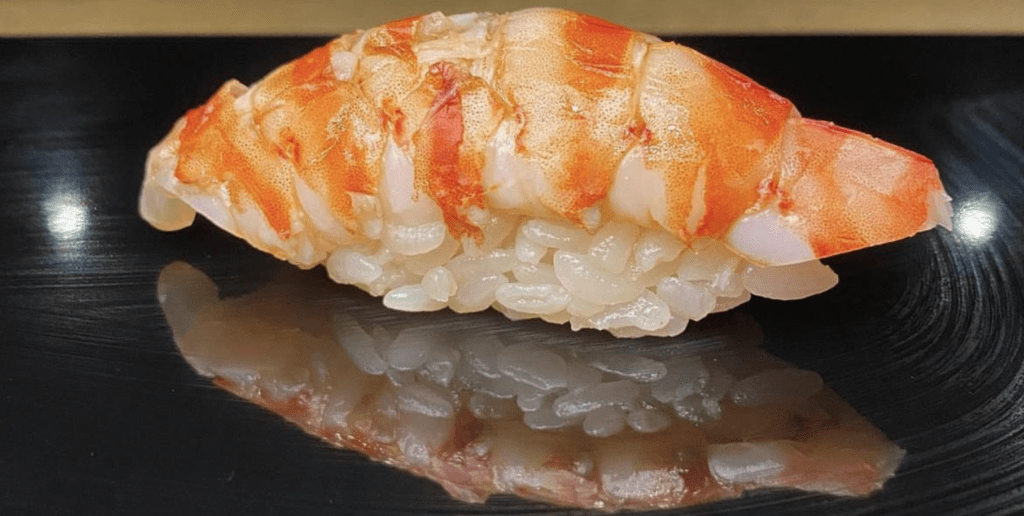

Kuruma ebi tiger prawn from Konamoto, Japan (Courtesy Shota Omakase)
The real star of the show, though, was the tuna. Lean, medium fat and fatty cuts of the fish proved incredibly flavorful and melted on the tongue a little too quickly. We could have eaten 18 plates of tuna alone and been totally satisfied.
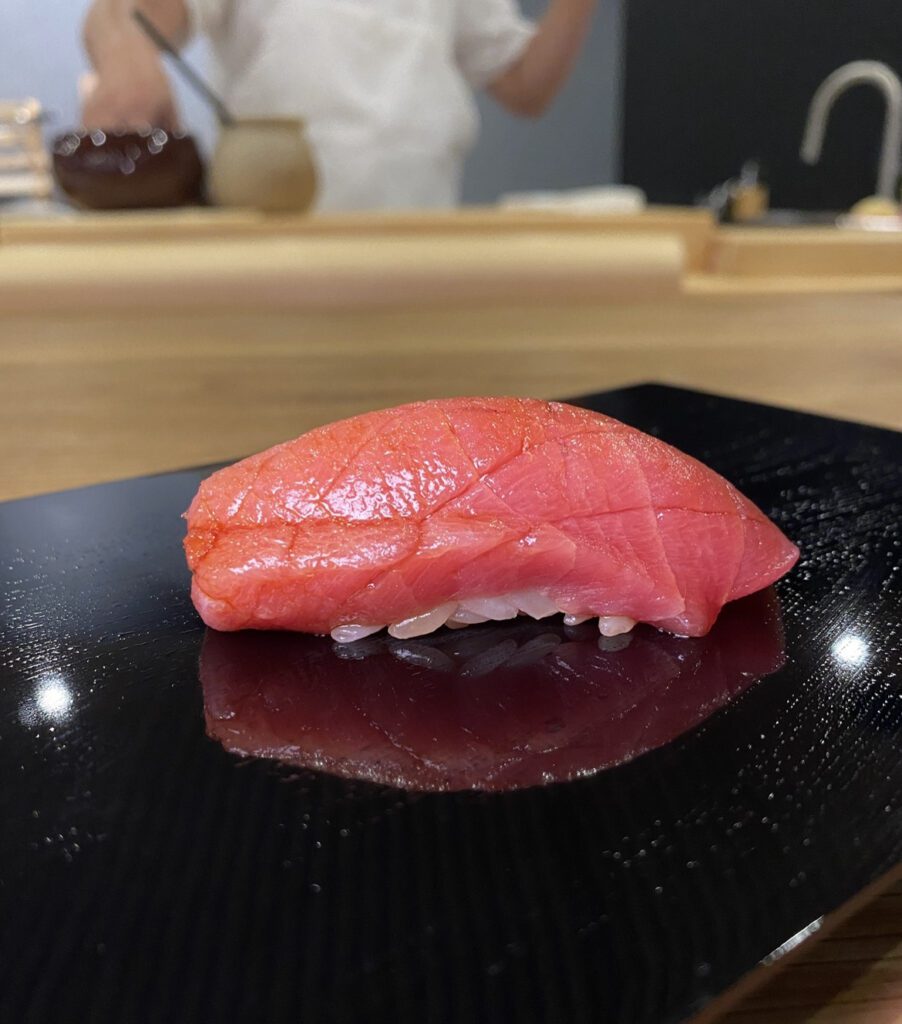

Chu toro from Ehime, Japan (Courtesy Shota Omakase)
The night finished with a trio of uni (sea urchin), a toro hand roll and a slice of tamago (egg roll) absolutely covered in black truffle.
Unlike some omakase, we were totally stuffed by the end of the dinner.
Taking a nod from the chef, however, when offered an a la carte piece of daigokujou uni, some of the highest grade available, we didn’t ask the price and happily accepted — it was $40.
You might also like 


















